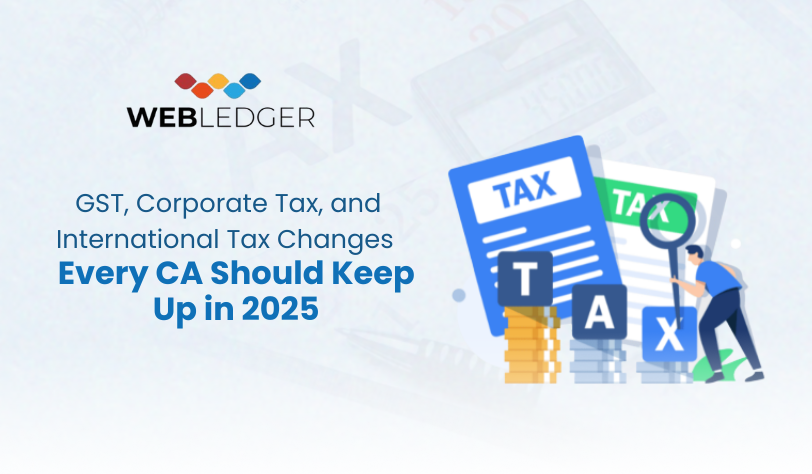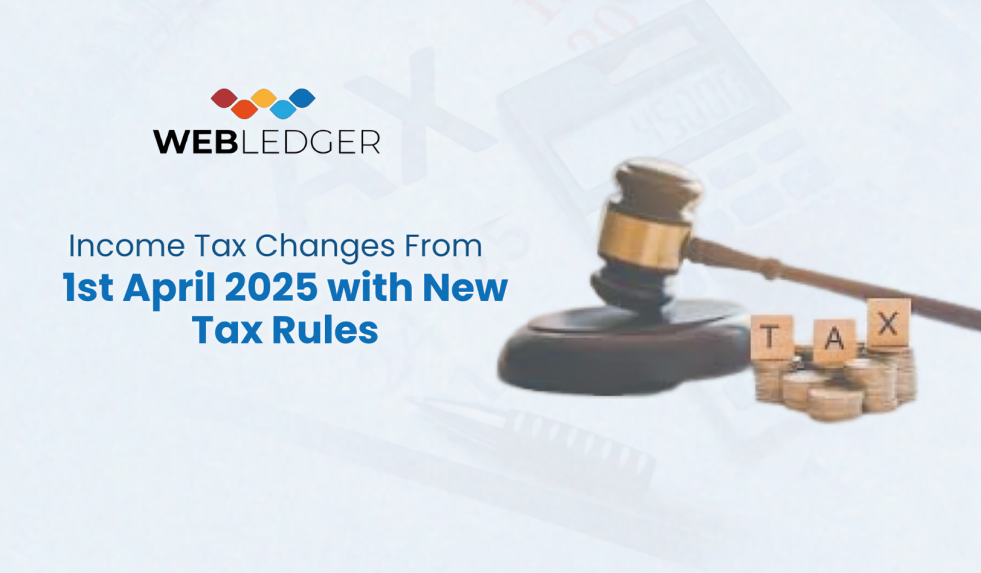The GST regime revolution, the new amendments of corporate tax and the dynamic
international tax regulations are changing the way business is taxed and the way you advise the
business in 2025. The following are significant modifications to inform your clients.
GST Changes: What is Changing and What You Should Recommend?
Purchased Slab Structure
The restructuring of the rate of GST is one of the most significant transformations that will happen in 2025. GST Council has taken the step of consolidating various slabs to a more lean system:
-
Primary slabs of 5 percent and 18 percent are replacing the old four-slab regime (5 percent, 12 percent, 18 percent, 28 percent), with more of the luxury/sin goods being subject to the higher rate (40 percent).
-
Most of the goods and services became applicable to these changes starting 22 September 2025.
The advice that the CAs should give to clients is:
-
Check the product/service classifications of your client: supplies that might have been charged 12 or 28 percent might now be charged 5 or 18. This affects pricing, margin and competitive positioning.
Your Growth Starts with
Better AccountingLet’s Talk!×Verify Your Mobile Number
We have sent a 6-digit OTP to your mobile number
Please enter the OTP below to proceed.Enter OTPOTP Sent 60s -
Modify the internal accounting/ERP systems to ensure the GST rates are updated to reflect the new slabs and invoicing and input-tax-credit (ITC) processes are updated.
-
Warn clients of transitional compliance – e.g. of dealing with stock, input credits, and inverted duty cases using old rates until the switch-over date.
-
Watch high-end commodities/ luxury goods (currently at 40 percent) to determine whether customers in areas such as automobiles, beverages/ high-end goods require some change in their tax provisioning.
Invoice Management System (IMS) Reconciliation & Updates
One more significant move: from 2025 (in October), an updated Invoice Management System (IMS) will be provided by the Goods and Services Tax Network (GSTN). Key features include:
-
Taxpayers are allowed to designate some credit notes as pending within a particular tax period, which will enhance the flexibility to reverse or accept input tax credit.
-
GSTR-9 (annual return) (Table 6A1) is a new table which needs to be rigorously reconciled with respect to ITC – matching claims with reversals in prior periods.
What CAs need to do?
-
Recommend to get books to conform to portal data – discrepancies will be a red flag with the ITC audit tightening.
-
Help in developing internal processes of credit-note approvals, reversal-tracking and documentation to give the client an opportunity to use the status of pending and take no risks.
-
Prepare on the anticipated annual return filing and audit consequences of the new table 6A1 disclosure.
Corporate Tax Updates: Direct Tax Developments you ought to keep up with
Start-up Tax Holiday Extension
The finance act 2025 increases the period of the eligible start-ups to claim tax holiday by five years now it is up until 1 April 2030.
What does it mean?
-
Your client could still get the tax holiday benefit in the event that you have a start-up that was incorporated prior to 31 March 2030.
-
Make sure that they comply with all requirements (turnover limit, business end-use etc.) and document.
Revised Return Filing Time-Limit
Finance Act, 2025 has increased the period during which a person can file an updated return (as per section 119(2)(b)) by 48 months instead of 24 months which is at the end of the tax year.
Action points for CAs:
-
Encourage customers that might have fallen behind on original returns to take advantage of this longer window – but point out other tax/interest consequences.
-
Liaise with your internal staff to monitor deadlines of returning filing and make preparations against carry forward losses and set-offs.
International Standards and Corporate Tax Rate Environment
Local firms are usually taxed at 22 percent plus surcharge/cess; new manufacturing firms can receive 15 percent according to some requirements.
India is converging to the international minimum corporate tax (Pillar Two) and changing BEPS-related changes.
Implications to your practice:
-
As the international tax regulations become increasingly restrictive guide clients to organize compliance with cross-border businesses, particularly manufacturing, export or digital-services.
-
Consider revising client advice in light of the way BEPS has changed your assumptions on the world tax arbitrage – consider tax-planning strategies where you thought there would be a lower global arbitrage.
What every CA needs to know about International Tax Updates?
Changing International Tax Administration
The Government of India, the Ministry of Finance has enlarged its international taxation web: new web pages on DTAA, TP (Transfer Pricing) provisions, non- resident and foreign company advance rulings.
Major reforms and incentives are also being implemented in India by multinationals.
Important International Tax Factors
-
In cases where clients conduct business across the border (such as India based service provider, or foreign company with Indian branch) you need to consider withholding tax requirements, permanent establishment aspects and transfer pricing documentation models.
-
As BEPS minimum tax is embraced in India, clients need to take precaution against foreign entities, profit shifting and controlled foreign company.
Taxation and equalisation levies in Digital economy
Digital economy taxation and equalisation levies keep on evolving – yet in India, the equalisation levy on certain digital services was abolished in 2025.
Practical Advice for CAs
-
Recommendation that they have sound cross-border documents: treaties, TP studies, outbound/inbound investment planning.
-
And when advising an international transaction or expansion, consider Indian rules with rules of foreign jurisdiction tax environment- tax-credits, minimum tax, anti-avoidance rules etc.
-
Be vigilant on modifications to DTAA negotiation, MAP (Mutual Agreement Procedure) results and Advance Pricing Agreement (APA) structures – these have an impact on the audit risk of international clients.
What does all this look like to Webledger?
Although most of the changes above are related to regulations, they also indicate the presence of the necessity of integrated, cloud-enabled accounting and compliance platforms to assist clients. Such is the way Webledger fits into these developments:
-
Webledger assists automated compliance processes, enabling businesses to make changes in GST slab rates, tax code changes, perform the reconciliation of ITC and file returns with greater effectiveness.
-
The platform provides live dashboards which monitor the tax liabilities (GST, corporate tax, international tax exposures) and can inform the clients/you when changes in legislation need to be taken action.
-
Multi-entity, multi-jurisdiction operations are another aspect of Webledger architecture, and it is applicable where the client has a cross-border tax or global business.
-
Webledger allows you (as the CA) to be a strategic advisor – not a compliance executor, by centralising accounting, tax, reporting and analytics into a single system.
Final Words
The new constant is clear to CAs in India in 2025: the new constant is tax change. Be it GST reform, corporate tax reform or international tax shift, you are valuable in bringing the change into actionable recommendations and keeping your clients on their toes.




